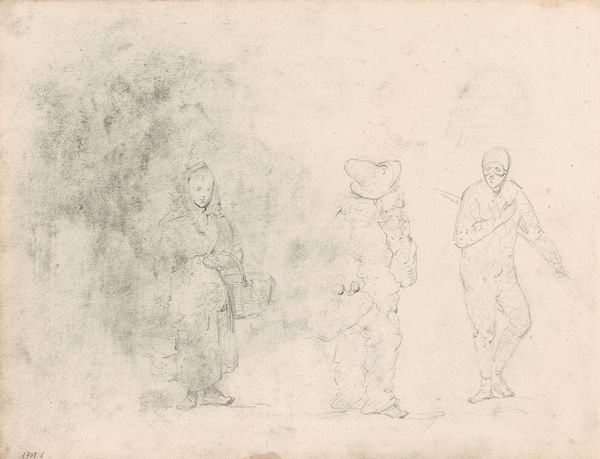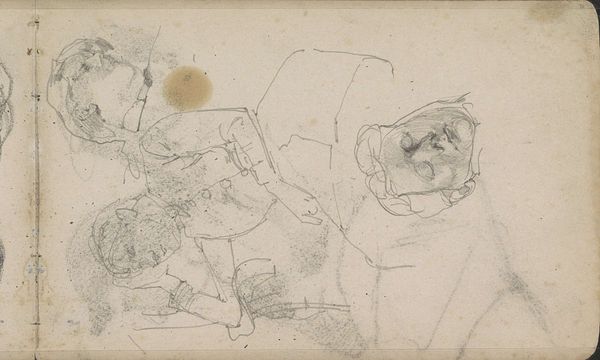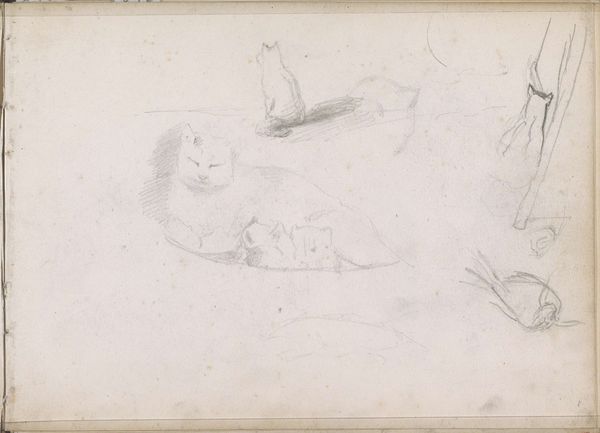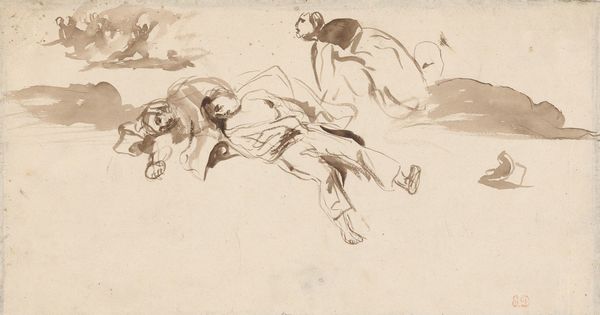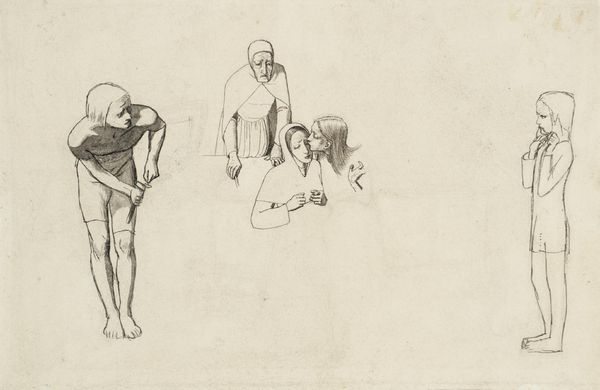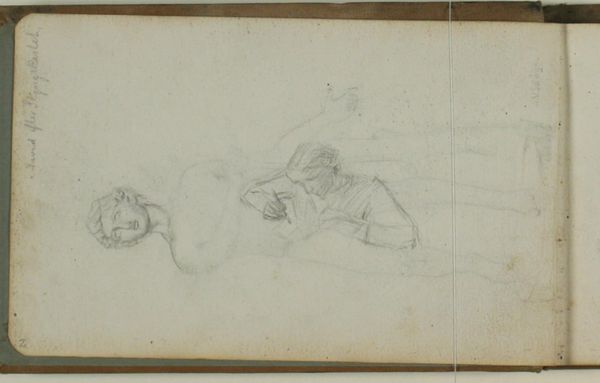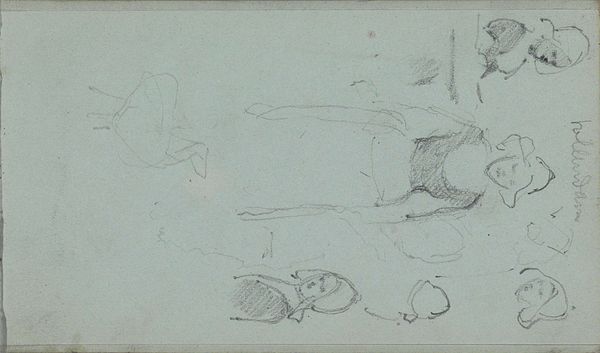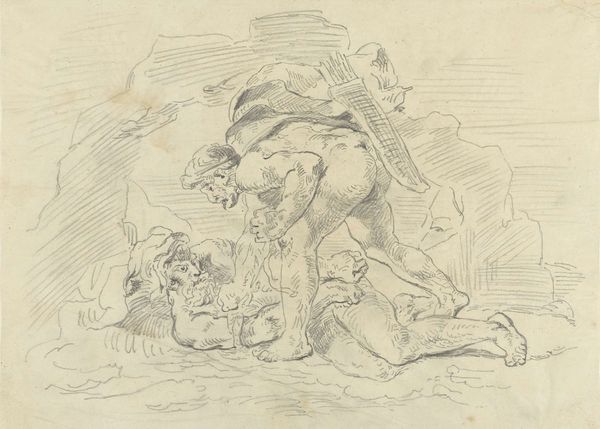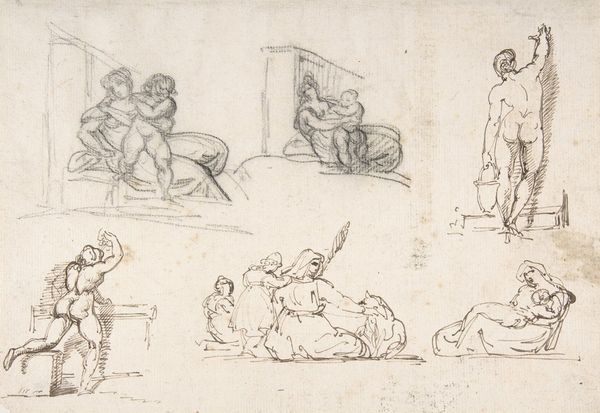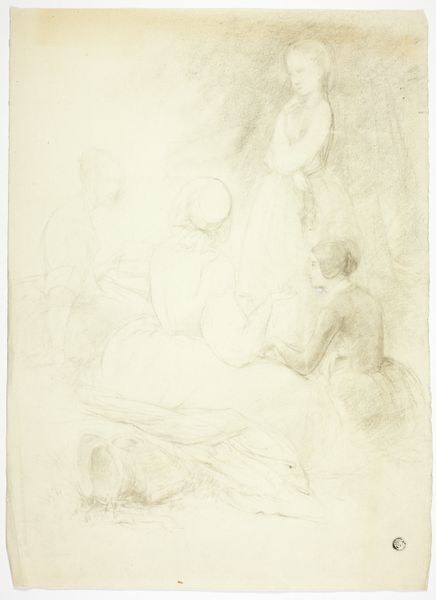
drawing, paper, watercolor, ink, charcoal
#
portrait
#
drawing
#
charcoal drawing
#
figuration
#
paper
#
watercolor
#
ink
#
coloured pencil
#
group-portraits
#
romanticism
#
charcoal
#
history-painting
Copyright: Public Domain: Artvee
Editor: Here we have Delacroix's "Studies of Heads and Figures," dating from around 1822 to 1827. It's an ink, watercolor, and charcoal drawing on paper filled with rapidly sketched figures. What I find intriguing is how seemingly ephemeral the piece feels, like catching a glimpse into Delacroix's creative process. What do you make of it? Curator: I see this work as less about the subjects depicted and more about the very act of *making*. Look at the varied pressure applied to the charcoal and ink. The artist seems preoccupied with testing the limits of his chosen materials – pushing ink to create washes, using charcoal for rapid modeling. Think of the cost of paper and materials for the average artist at the time: these sheets might be considered valuable raw material for production and eventual profit through painting, printmaking, and artistic pedagogy. The value of the raw materials gives them another symbolic meaning, one of practice. Editor: So, it's about experimenting with artistic labor? Almost like Delacroix is thinking through the mechanics of representation itself? Curator: Precisely. Consider the social context, too. Early 19th century Romanticism championed individual expression, yet artists were still bound by the market and expectations. Studies like these reveal an artist negotiating those tensions. Were they merely preparatory studies for larger works or could they serve another role as raw capital on which Delacroix could make profit from? Editor: That makes sense. I always assumed these were sketches *for* something else, but framing them as explorations of the materials themselves—that completely changes how I see them. Curator: It compels us to look beyond traditional notions of 'high art' and consider the often unseen labor and materiality involved in artistic production. Even the hierarchy between sketch and painting can be interrogated. Editor: I hadn’t really considered the material reality behind a drawing like this, just the image itself. I'll definitely look at sketches differently now. Curator: It highlights how meaning is constructed not just through representation, but through the very means of production.
Comments
No comments
Be the first to comment and join the conversation on the ultimate creative platform.
